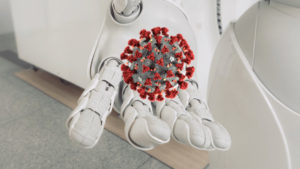Healthcare is one of the most critical industries that take care of the quality of health for the entire population of a country. No matter if a nation is a developed one or an underdeveloped one, the scope of improvement always remains open for all. But, without a healthy population supplying steady, able, and skilled human resources, no country can expect to shine in the future.
Even a low-quality human resource might lead a nation to poor economic health as well. Hence, it is of paramount importance for a country to have a professionally skilled and efficient healthcare sector to maintain the average quality of health of the population, ensuring a steady growth graph of the nation.
The healthcare sector employs thousands of people. Be it a doctor, a nurse, a radiologist, or a clinician, the healthcare sector offer ample opportunities to all. However, since the responsibility of anyone related to the healthcare sector remains to treat the ailing ones, it becomes evident that the healthcare sector employees always remain exposed to the threat of infection.
While treating or taking care of the patients, the service providers and the caregivers often fall prey to the infection s of the patients, which causes the healthcare sector a vulnerable place to work. If the threat of infection continues, the industry will not be able to perform at its optimum as many of the people engaged in this sector will be leaving the job behind t make sure that they do not catch diseases at the workplace.
Hence, safety for the medical practitioners and everyone associated with the noble task of treatment must be ensured. There must be ample gears and replacements for humans for contagious diseases and viral infections to keep the sector that keep the others healthy, in good health.
It is not that the healthcare sector does not use any protective gear to keep the caregivers and the medical experts out of the danger of infections. But, as technology and science are advancing, better ways to ensure health for the healthcare sector employees must be thought of. Plenty of gears are available already in the market to keep the healthcare sector employees out of the reach of the deadly diseases.
However, while treating, sometimes people do get exposed to the bacteria and viruses that cause the diseases. However, the latest innovations have somehow guaranteed that going forward, fewer medical sector practitioners and employees will suffer the same fate as AI and Robotics have come up with magical solutions to keep the professional guarded.
Especially when it comes to fighting a virus as lethal as COVID-19, AI, and robotics can set new landmarks as it did for Wuhan while tending the patients suffering from Coronavirus contamination.
Wuhan, which is already popular across the globe for being the Ground Zero for Covid-19 infection, has already experienced stormy days and sleepless nights managing the influx of patients with Covid-19 symptoms.
What makes the disease worse is its ability to infect others. The highly contagious diseases spread in multitudes when any human comes in contact with another COVID-19 infected person. But, Wuhan checked the spread of the virus by restricting the number of people coming in touch with the patients. It was AI and robotics that turned out to be a blessing for Wuhan in managing COVID-19.

AI And Robotics In Healthcare
What Wuhan did with its Ai and Robotics was quite unique. It installed some of the machines operated with robotics technology to diagnose the patients entering the hospitals with elevated body temperature. The phenomenon of infrared thermometry was used to detect the temperature of the body of the patients at the entrance to send an alert message to the medical staff so that they can get ready with the gears to fight the virus.
Also, Wuhan hospitals avoided human contacts to ensure that the disease does not spread. Some robots resembled a human and some microwaves. The smart band on the wrists of the patients remained aligned and programmed with the robotic devices for thorough treatment and care.
Every physiological change got registered to the robots through the connectivity shared between the smart band of the patient and the robots. According to CloudMinds CEO Bill Huang, the robots enabled the doctors and other medical practitioners to keep a close watch on the vital signs of the patient even when they stayed out of the facilities.
Costing around $17,000 to $72,000, each of these robots effectively reduced the man-to-man interaction, reducing the number of new patients each day and also kept the healthcare professional safe.
We at SepStream®, integrate technology with common knowledge. We make sure that all of our clients get the best of services from us. We keep our offers varied in options and prices. You can choose any depending on your requirements. We also make sure that every client gets individual attention and not a template solution.